SIPOC adalah alat yang merangkum input dan output dari satu atau lebih proses dalam bentuk tabel. Alat ini banyak digunakan dalam desain proses dan inisiatif perbaikan untuk mengidentifikasi informasi yang relevan sebelum memulai proyek. SIPOC telah digunakan setidaknya sejak program manajemen kualitas total pada akhir 1980-an dan terus digunakan hingga hari ini dalam Six Sigma, manufaktur ramping, dan manajemen proses bisnis.
Apa itu SIPOC?
Singkatan SIPOC berarti Pemasok, Input, Proses, Output, dan Pelanggan. Menggunakan informasi dari lima area ini menciptakan peta proses yang memberikan gambaran umum tingkat tinggi tentang proyek Six Sigma. Untuk membuat diagram SIPOC, Anda harus menentukan lima aktivitas utama dari proses dan mengidentifikasi pemasok, input, output, dan pelanggan yang potensial.
Jadi, apa saja lima area yang termasuk dalam diagram? Berikut adalah penjelasan singkat dalam konteks contoh gerai limun:
- Pemasok — Penyedia input ke dalam proses, misalnya toko bahan makanan, toko perabot rumah, permintaan pelanggan
- Input — Bahan, informasi, dan sumber daya lain yang diperlukan untuk menyelesaikan suatu proses, misalnya jus lemon, air, gula, es, gelas, sendok pengaduk, pitcher besar, kayu dari toko perabot rumah, toples uang, area pejalan kaki yang ramai, orang untuk mengoperasikan gerai
- Proses — Langkah-langkah terstruktur yang digunakan untuk mengubah input menjadi output, misalnya membangun gerai limun, menggabungkan bahan untuk membuat limun dalam pitcher, mengambil pesanan pelanggan, menuangkan limun dari pitcher ke gelas
- Output — Produk atau layanan yang dihasilkan dari proses, misalnya gelas limun dingin, uang yang ditempatkan dalam toples
- Pelanggan — Penerima output, misalnya pejalan kaki yang haus
Diagram SIPOC Sekilas
- Peta proses tingkat tinggi yang mendefinisikan ruang lingkup suatu proses dan input, output, pemasok, serta pelanggan.
- Mewakili aliran proses dan elemen kuncinya dalam format tabel.
- Banyak digunakan dalam desain proses dan inisiatif perbaikan.
- Ini membantu mengidentifikasi informasi yang relevan sebelum memulai proyek.

Bagaimana Cara Membuat Diagram SIPOC?
Peta SIPOC dapat dibuat dengan cepat dengan menggambar tabel yang terdiri dari lima kolom kemudian memberi judul masing-masing sebagai pemasok, input, proses, output, dan pelanggan. Anda kemudian dapat menambahkan masing-masing elemen SIPOC di kolom yang sesuai.
Seperti pemetaan proses, SIPOC adalah usaha tim. Tim Anda harus mencakup orang-orang yang memiliki pengetahuan yang cukup tentang proses.
Tujuh Langkah untuk Mengembangkan SIPOC
Langkah-langkah berikut menjelaskan cara membuat peta SIPOC dengan tim Anda dalam konteks contoh “Proses Pembelian Mobil”:
- Tentukan nama atau judul untuk proses dalam Diagram SIPOC.
- Jelaskan langkah-langkah proses tingkat atas dari proses tersebut
- Isi bagian Output
- Siapa Pelanggannya? Siapa yang akan mendapatkan manfaat dari proses ini? Siapa yang akan kecewa jika proses ini tidak berjalan sesuai yang diharapkan?
- Apa saja persyaratan Pelanggan? Daftar persyaratan untuk masing-masing Output
- Apa saja Input Eksternal untuk “Proses”? Daftar persyaratan yang dijelaskan dalam proses untuk masing-masing input
- Siapa yang Menyediakan Input?
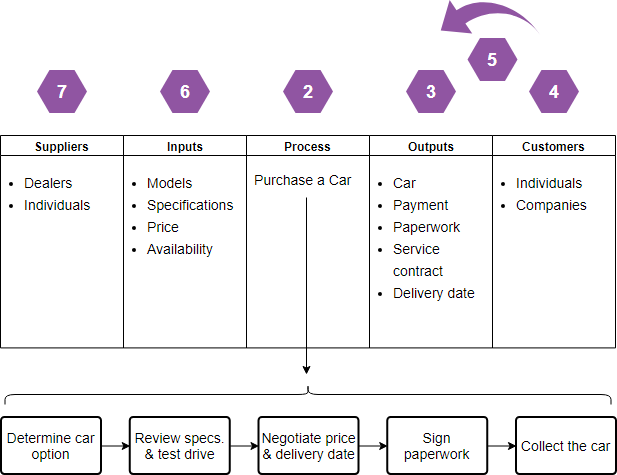
Template SIPOC dan Contoh SIPOC
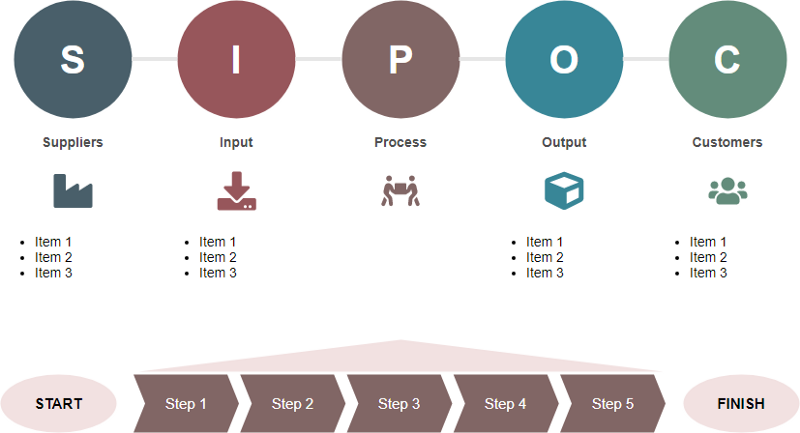
Contoh SIPOC Lainnya
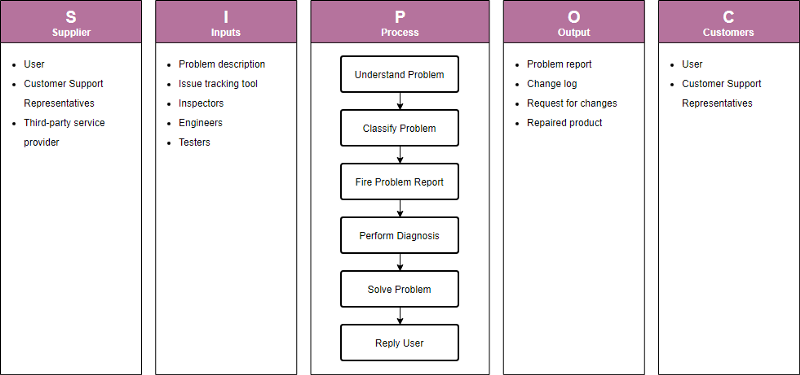
Buat Diagram SIPOC dengan Alat Daring
Visual Paradigm Daringmenawarkan koleksi kaya template diagram SIPOC yang dirancang secara profesional. Anda dapat dengan mudah menyesuaikan dan menyertakannya dalam presentasi Anda.
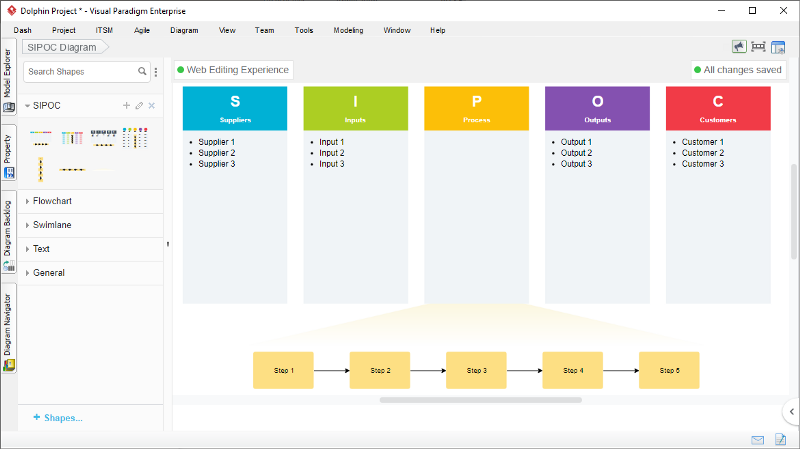
Pembuat Diagram SIPOC terbaik — Cepat, mudah digunakan, dan dilengkapi dengan fitur-fitur canggih.
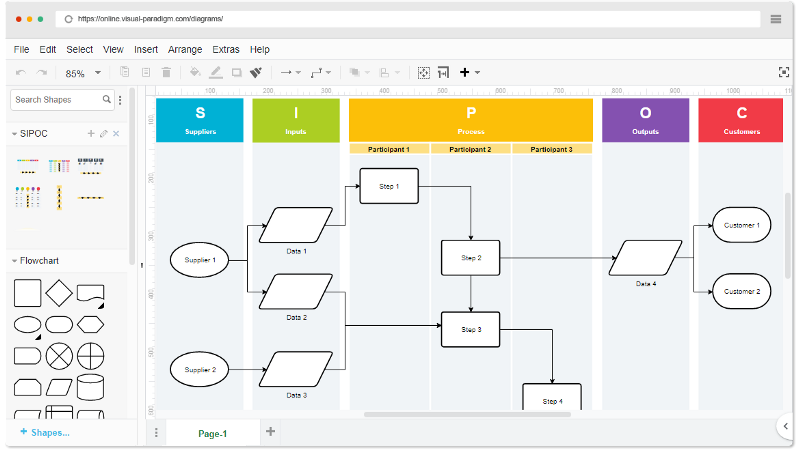
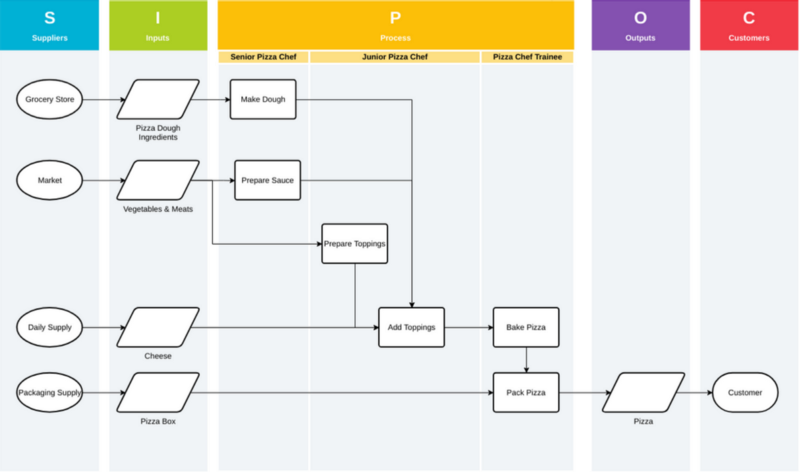
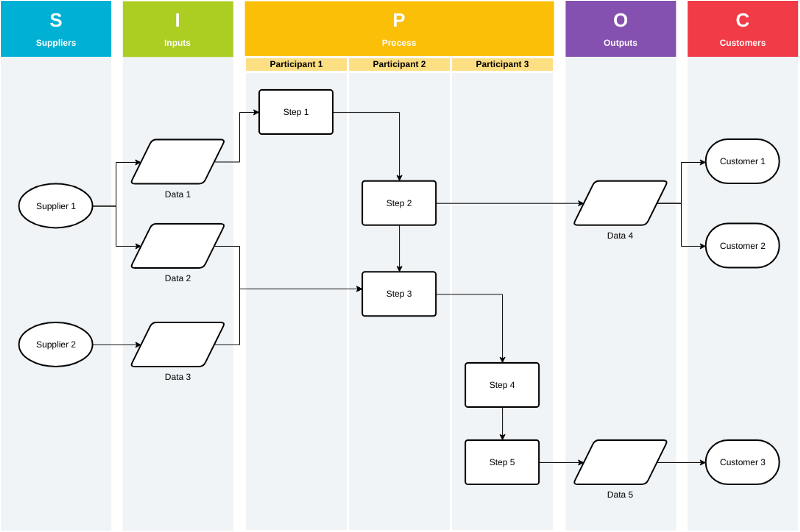
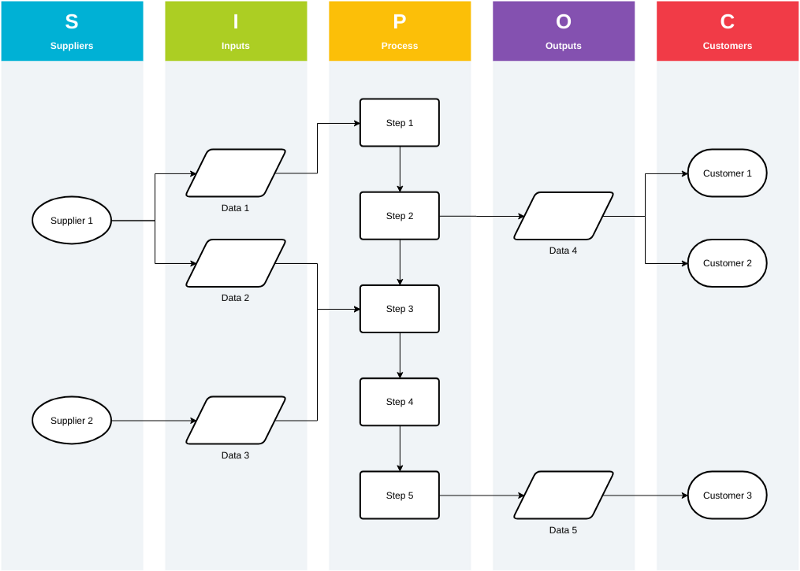
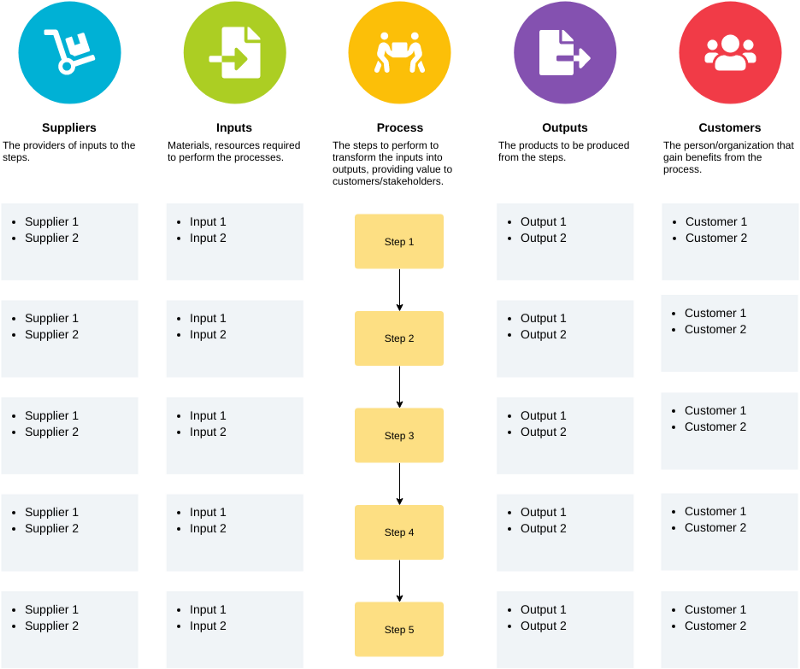
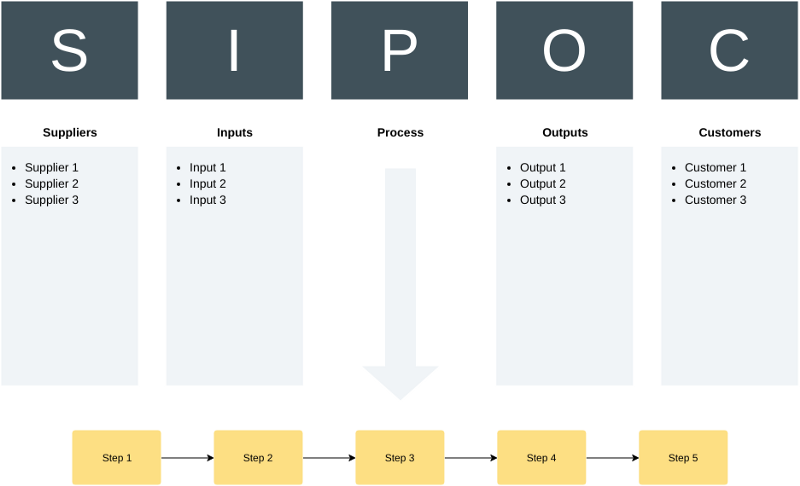
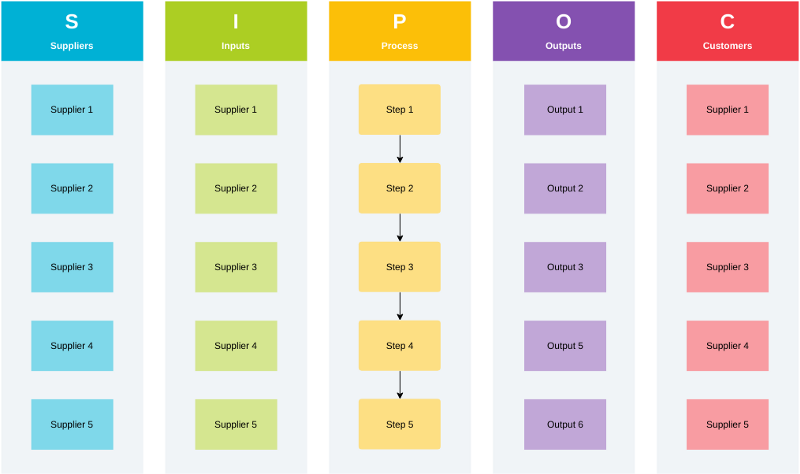
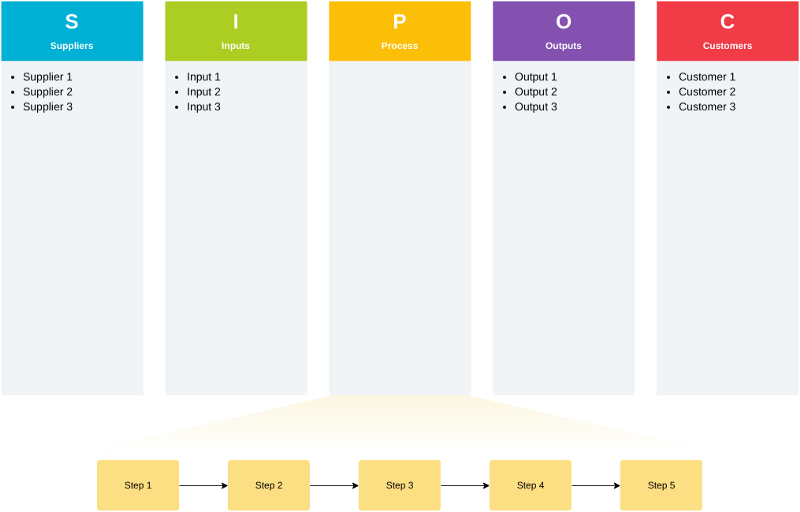
This post is also available in Deutsch, English, فارسی, Français, 日本語, Polski, Portuguese, Ру́сский, Việt Nam, 简体中文 and 繁體中文.












